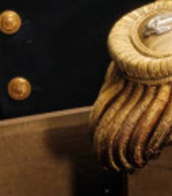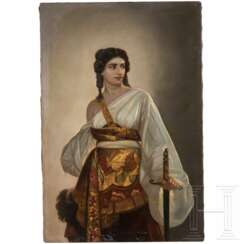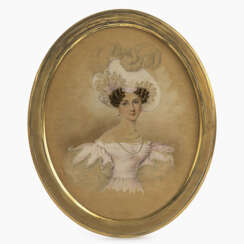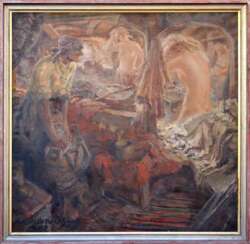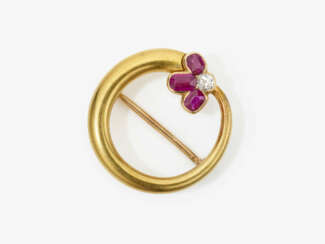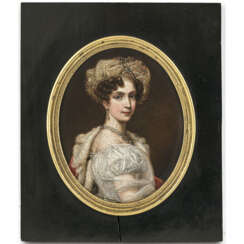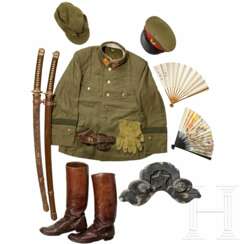augusta


Pierre-Auguste Renoir was a French artist, celebrated as a pivotal figure in the development of the Impressionist movement. Born in Limoges, France, in 1841, Renoir's early experiences in Paris and his apprenticeship as a porcelain painter laid the foundation for his illustrious career in art. His transition to painting was marked by an early fascination with the play of light and color, which became a hallmark of his work. Renoir's paintings are renowned for their vibrant light and saturated color, often focusing on people in intimate and candid compositions. This focus on beauty and a particular affinity for capturing the sensuality of the female form distinguished his work from his contemporaries.
Renoir's contributions to Impressionism were significant, characterized by his use of bright colors and a technique that captured the movement and luminosity of the scene. His evolution as an artist saw him experimenting with a more linear and classical style, especially after his travels to Italy, where he was deeply influenced by the Renaissance masters. Despite facing personal challenges, including severe rheumatoid arthritis in his later years, Renoir's passion for painting never waned. His determination saw him adapting his painting technique to his physical limitations, ensuring that his creative output remained prolific until his death in 1919.
Among Renoir's notable works are "Bal du moulin de la Galette" (1876), "Luncheon of the Boating Party" (1880), and "Girls at the Piano" (1892). These masterpieces exemplify the essence of Impressionist art with their depiction of light, movement, and everyday life. Renoir's works are housed in prestigious museums around the world, serving as a testament to his enduring legacy in the realm of art.
For art collectors and experts, Renoir's oeuvre represents an essential segment of the Impressionist movement, offering insights into the evolution of modern art. His mastery in portraying the beauty of the moment and the depth of human emotion continues to captivate and inspire audiences worldwide.
If you are passionate about collecting or studying the works of Pierre-Auguste Renoir, we invite you to sign up for updates on new product sales and auction events related to this iconic artist. Stay informed about the opportunity to own a piece of art history and deepen your appreciation for the rich tapestry of culture and art that Renoir helped weave.


August Wilhelm Leu was a German landscape painter of the Romantic era. Most of his paintings are large format and depict scenes in Norway and the Alps. He studied painting under Johann Wilhelm Schirmer at the Düsseldorf Academy of Art.
August Wilhelm Loy's landscapes are characterized by a magnificent romantic conception of Alpine nature, masterful rendering, bright colours and well calculated light effects. Loy attached great importance to the particularly detailed design of the foreground.


August Seidel was a German landscape painter, brother of Franz Seidel.
He painted landscapes, often depicting the foothills of the Bavarian Alps. Influenced by John Constable and the Barbizon School.
Seidel's works are in the New Pinakothek in Munich, the Wroclaw Museum and others.



Joseph Karl Stieler was a German painter. From 1820 until 1855 he worked as royal court painter of the Bavarian kings. He is known for his Neoclassical portraits, especially for the Gallery of Beauties at Nymphenburg Palace in Munich, as well as his emblematic portrait of Ludwig van Beethoven, which has become one of his most famous works.







